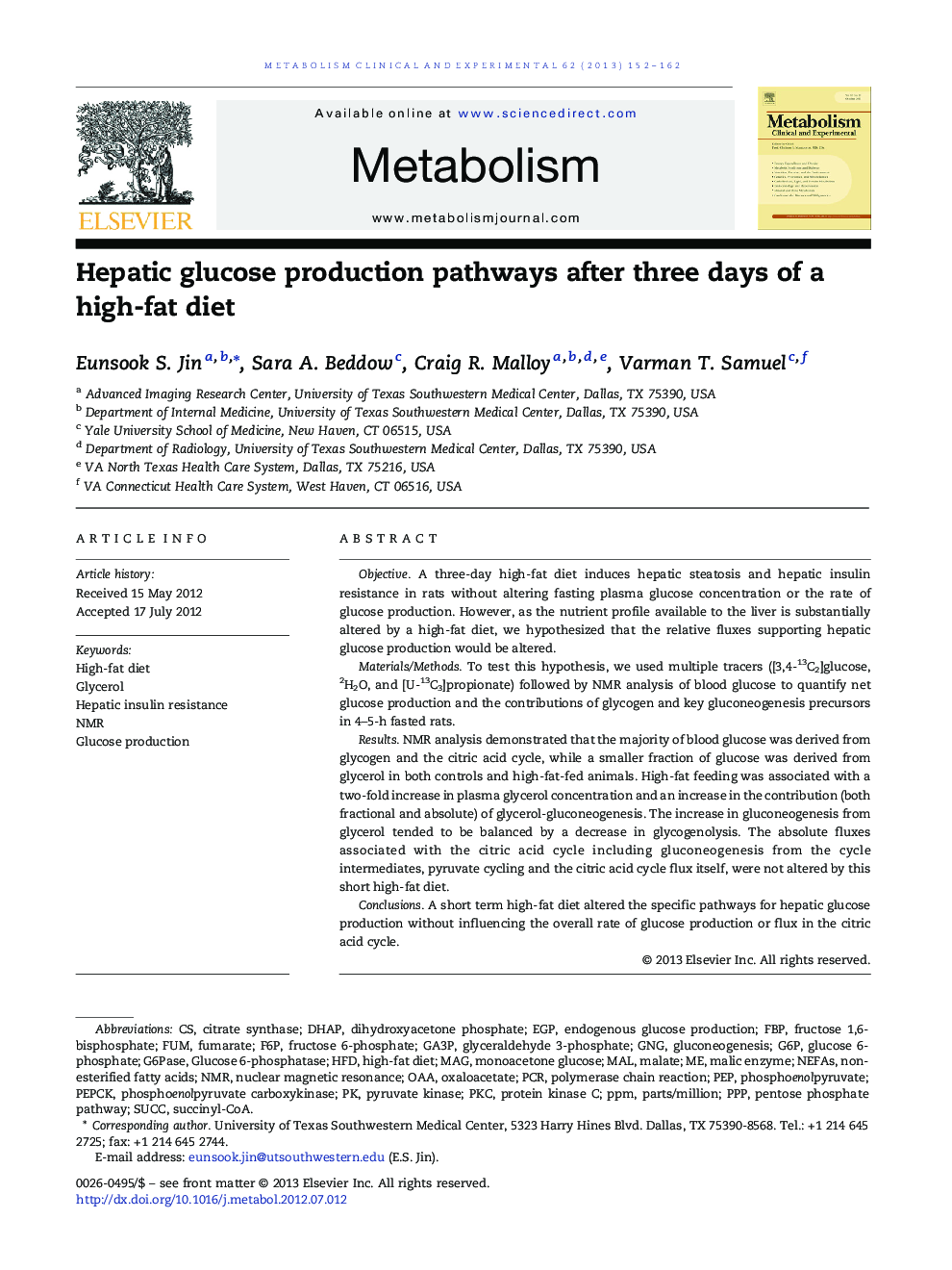| Article ID | Journal | Published Year | Pages | File Type |
|---|---|---|---|---|
| 2805974 | Metabolism | 2013 | 11 Pages |
ObjectiveA three-day high-fat diet induces hepatic steatosis and hepatic insulin resistance in rats without altering fasting plasma glucose concentration or the rate of glucose production. However, as the nutrient profile available to the liver is substantially altered by a high-fat diet, we hypothesized that the relative fluxes supporting hepatic glucose production would be altered.Materials/MethodsTo test this hypothesis, we used multiple tracers ([3,4-13C2]glucose, 2H2O, and [U-13C3]propionate) followed by NMR analysis of blood glucose to quantify net glucose production and the contributions of glycogen and key gluconeogenesis precursors in 4–5-h fasted rats.ResultsNMR analysis demonstrated that the majority of blood glucose was derived from glycogen and the citric acid cycle, while a smaller fraction of glucose was derived from glycerol in both controls and high-fat-fed animals. High-fat feeding was associated with a two-fold increase in plasma glycerol concentration and an increase in the contribution (both fractional and absolute) of glycerol-gluconeogenesis. The increase in gluconeogenesis from glycerol tended to be balanced by a decrease in glycogenolysis. The absolute fluxes associated with the citric acid cycle including gluconeogenesis from the cycle intermediates, pyruvate cycling and the citric acid cycle flux itself, were not altered by this short high-fat diet.ConclusionsA short term high-fat diet altered the specific pathways for hepatic glucose production without influencing the overall rate of glucose production or flux in the citric acid cycle.
